Growing Tomatoes at Home can feel like a daunting task, especially if you’re new to gardening. But what if I told you that with a few clever tricks and DIY hacks, you could be harvesting juicy, sun-ripened tomatoes right from your own backyard (or balcony!) in no time? Forget those bland, store-bought tomatoes – we’re talking about flavor explosions that will elevate your salads, sauces, and sandwiches to a whole new level.
The history of tomato cultivation is fascinating, dating back to the Aztecs and Incas. These cultures recognized the potential of this vibrant fruit, and now, centuries later, we can easily bring that same tradition into our own homes. But let’s face it, not everyone has a green thumb, and that’s perfectly okay! That’s where these DIY tricks come in.
Why do you need these hacks? Because growing tomatoes at home shouldn’t be a struggle! Many people are intimidated by the perceived complexity of gardening, but with the right knowledge and a few simple techniques, anyone can enjoy the satisfaction of nurturing their own tomato plants. I’m here to share my favorite tips and tricks that will help you avoid common pitfalls, maximize your yield, and ultimately, enjoy the most delicious tomatoes you’ve ever tasted. Get ready to roll up your sleeves and let’s get growing!
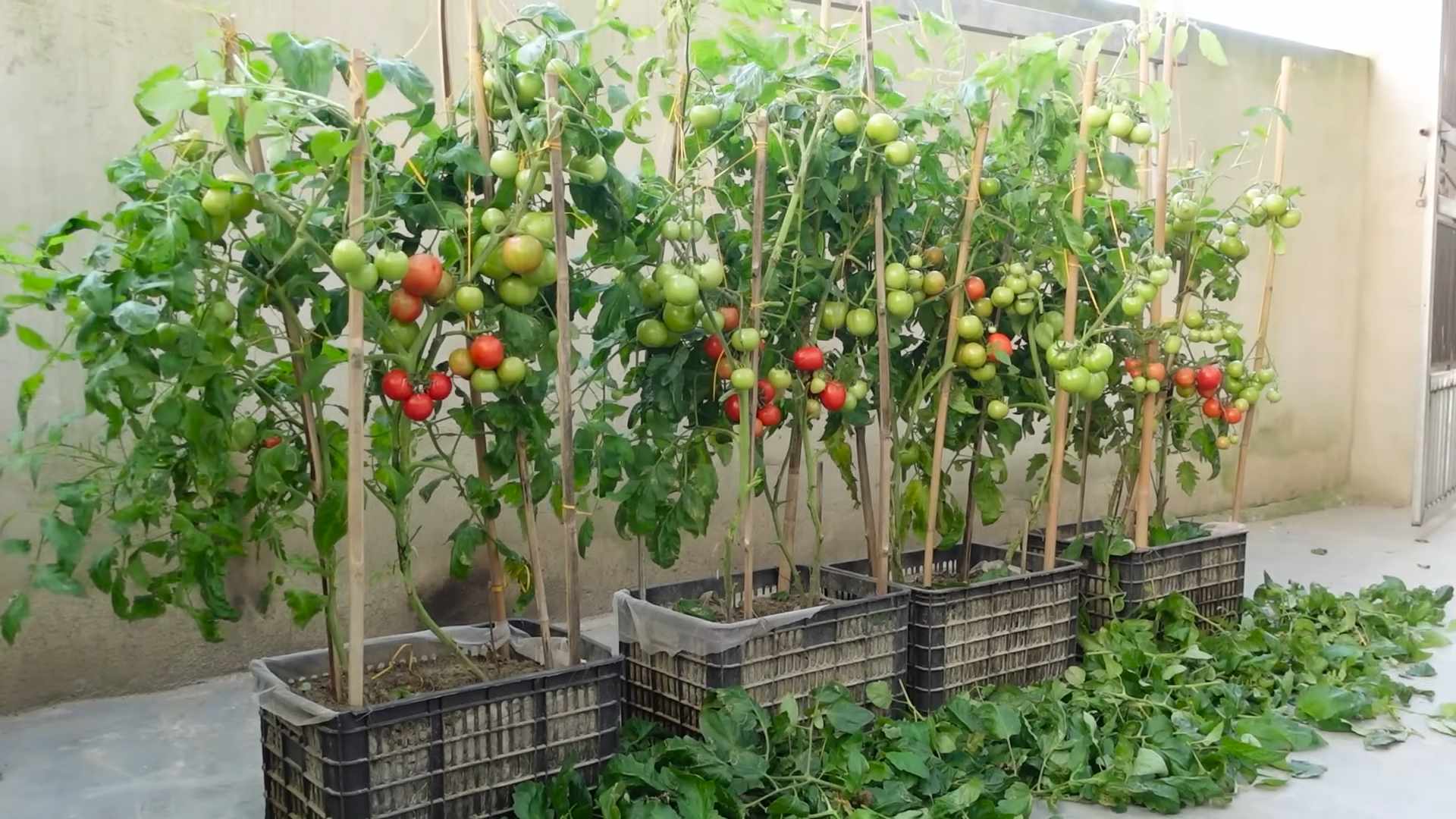
Growing Tomatoes at Home: A DIY Guide to Deliciousness
Okay, tomato lovers, let’s get our hands dirty! I’m going to walk you through everything you need to know to grow your own juicy, flavorful tomatoes right at home. Forget those bland supermarket tomatoes – we’re talking about sun-ripened perfection, bursting with taste. This guide is designed for beginners, so don’t worry if you’ve never grown anything before. I’ll break it down step-by-step.
Choosing Your Tomato Varieties
First things first, let’s talk tomatoes! There are literally hundreds of varieties, so choosing can feel overwhelming. Here’s a quick rundown to help you decide:
* **Determinate vs. Indeterminate:** This is crucial! Determinate tomatoes grow to a certain size and produce all their fruit at once, making them great for canning. Indeterminate tomatoes keep growing and producing fruit throughout the season, giving you a continuous harvest. I personally prefer indeterminate for fresh eating.
* **Size and Shape:** Do you want tiny cherry tomatoes, medium-sized slicers, or giant beefsteaks? Think about how you plan to use them.
* **Disease Resistance:** Look for varieties labeled with letters like V, F, N, T, or A. These indicate resistance to common tomato diseases like Verticillium wilt, Fusarium wilt, Nematodes, Tobacco Mosaic Virus, and Alternaria. Trust me, disease resistance is your friend!
* **Days to Maturity:** This tells you how long it takes from planting to harvest. Choose varieties that fit your growing season. If you have a short summer, opt for early-maturing types.
Some of my personal favorites include:
* **Cherry Tomatoes:** Sungold (super sweet!), Black Cherry (unique flavor)
* **Slicing Tomatoes:** Early Girl (reliable and early), Brandywine (classic heirloom flavor)
* **Paste Tomatoes:** Roma (perfect for sauce), San Marzano (the Italian standard)
Starting Your Tomato Seeds (or Buying Seedlings)
You have two options here: start your own seeds indoors or buy seedlings from a nursery. Starting seeds gives you more control over the varieties you grow and can save you money, but it requires a bit more effort.
Starting Seeds Indoors:
1. **Gather Your Supplies:** You’ll need seed starting trays or small pots, seed starting mix (not regular potting soil!), tomato seeds, a spray bottle, and a grow light (optional, but highly recommended).
2. **Sow the Seeds:** Moisten the seed starting mix and fill your trays or pots. Plant the seeds about 1/4 inch deep, two or three seeds per cell. Gently cover with more mix and lightly water with the spray bottle.
3. **Provide Warmth and Light:** Tomato seeds need warmth to germinate. A heat mat is ideal, but you can also place the trays in a warm spot in your house. Once the seedlings emerge, they need plenty of light. A grow light is best, but a sunny windowsill can work if you turn the trays regularly to prevent the seedlings from leaning towards the light.
4. **Water Carefully:** Keep the soil consistently moist, but not soggy. Water from the bottom by placing the trays in a shallow dish of water and letting the soil absorb it.
5. **Thin the Seedlings:** Once the seedlings have their first true leaves (the second set of leaves that appear after the initial seed leaves), thin them to one seedling per cell by snipping off the weaker ones at the soil line. Don’t pull them out, as this can disturb the roots of the remaining seedling.
6. **Harden Off the Seedlings:** About a week before you plan to transplant them outdoors, you need to “harden off” the seedlings. This means gradually exposing them to outdoor conditions. Start by placing them outside in a sheltered spot for an hour or two each day, gradually increasing the time and exposure to sunlight and wind.
Buying Seedlings:
1. **Choose Healthy Seedlings:** Look for seedlings that are stocky, green, and have no signs of disease or pests. Avoid plants that are leggy (tall and spindly) or have yellowing leaves.
2. **Check the Roots:** Gently remove a seedling from its pot and inspect the roots. They should be white and healthy-looking, not brown or circling tightly around the pot.
3. **Consider the Variety:** Make sure the seedlings are labeled with the variety you want.
Preparing Your Garden Bed
Tomatoes need at least 6-8 hours of sunlight per day and well-drained soil.
1. **Choose a Sunny Location:** Pick a spot in your garden that gets plenty of sunshine.
2. **Test Your Soil:** A soil test will tell you the pH and nutrient levels of your soil. Tomatoes prefer a slightly acidic soil (pH 6.0-6.8). You can buy a soil testing kit at most garden centers.
3. **Amend the Soil:** Based on your soil test results, amend the soil with compost, aged manure, or other organic matter to improve drainage and fertility. I usually add a generous amount of compost to my tomato beds.
4. **Prepare the Planting Holes:** Dig holes that are deep enough to bury the bottom part of the tomato stem. This encourages the plant to develop more roots along the buried stem, making it stronger and more productive. Space the holes according to the variety you’re growing. Determinate tomatoes can be planted closer together than indeterminate tomatoes. Check the seed packet or plant tag for specific spacing recommendations.
Transplanting Your Tomato Seedlings
This is a crucial step, so take your time and be gentle.
1. **Water the Seedlings:** Water the seedlings thoroughly before transplanting.
2. **Remove the Seedlings from Their Pots:** Gently squeeze the sides of the pot to loosen the root ball. Carefully remove the seedling, supporting the stem with your hand.
3. **Plant Deep:** Plant the seedlings deep, burying the bottom part of the stem. As I mentioned before, this encourages more root growth.
4. **Add Support:** Install stakes, cages, or trellises at the time of planting. This will help support the plants as they grow and prevent the fruit from touching the ground. I prefer using tomato cages for most varieties.
5. **Water Thoroughly:** Water the newly transplanted seedlings thoroughly.
6. **Mulch:** Apply a layer of mulch around the plants to help retain moisture, suppress weeds, and regulate soil temperature. Straw, shredded leaves, or wood chips are all good options.
Caring for Your Tomato Plants
Now comes the ongoing care. Consistent watering, fertilizing, and pruning are key to a bountiful harvest.
1. **Watering:** Tomatoes need consistent watering, especially during hot, dry weather. Water deeply and infrequently, rather than shallowly and frequently. Aim to water at the base of the plant to avoid wetting the foliage, which can encourage disease.
2. **Fertilizing:** Tomatoes are heavy feeders, so they need regular fertilization. Use a balanced fertilizer specifically formulated for tomatoes. Follow the instructions on the fertilizer package. I like to use a slow-release fertilizer at planting time and then supplement with a liquid fertilizer every few weeks.
3. **Pruning:** Pruning is important for indeterminate tomato varieties. Remove the “suckers” that grow in the crotch between the main stem and the branches. These suckers will eventually produce their own stems, leaves, and fruit, but they will also draw energy away from the main plant, resulting in smaller, fewer tomatoes.
4. **Pest and Disease Control:** Keep an eye out for common tomato pests like aphids, tomato hornworms, and whiteflies. Handpick pests whenever possible. For diseases, prevention is key. Choose disease-resistant varieties, water at the base of the plant, and provide good air circulation. If you do encounter disease problems, use an appropriate fungicide.
5. **Support:** As the plants grow, make sure they are adequately supported by their stakes, cages, or trellises. Tie the stems to the supports as needed.
Harvesting Your Tomatoes
The moment we’ve all been waiting for!
1. **Harvest When Ripe:** Tomatoes are ripe when they are fully colored and slightly soft to the touch. They should also detach easily from the vine.
2. **Handle with Care:** Handle the tomatoes gently to avoid bruising them.
3. **Store Properly:** Store ripe tomatoes at room temperature, out of direct sunlight. Refrigerating them can affect their flavor and texture.
Troubleshooting Common Tomato Problems
Even with the best care, you might encounter some problems along the way. Here are a few common issues and how to address them:
* **Blossom End Rot:** This is caused by a calcium deficiency. Make sure your soil has enough calcium and water consistently.
* **Tomato Hornworms:** These large green caterpillars can quickly defoliate your tomato plants. Handpick them and drop them into a bucket of soapy water.
* **Early Blight:** This fungal disease causes dark spots on the leaves. Remove infected leaves and apply a fungicide.
* **Cracking:** This is caused by inconsistent watering. Water regularly and deeply.
Enjoying Your Homegrown Tomatoes
Congratulations! You’
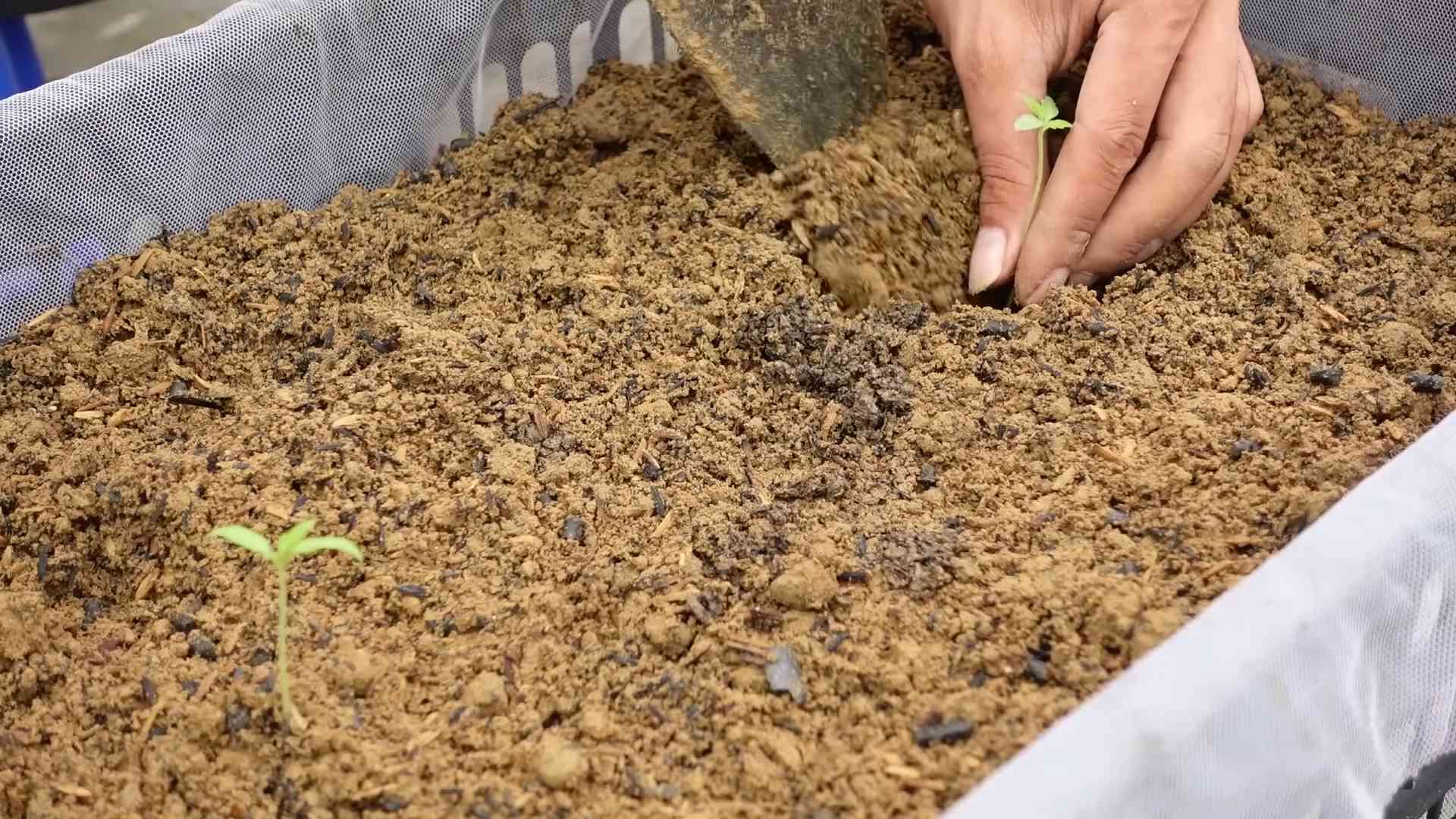
Conclusion
So, there you have it! Growing tomatoes at home, especially with these simple DIY tricks, is not just a rewarding experience; it’s a gateway to enjoying the freshest, most flavorful tomatoes you’ve ever tasted. Forget those bland, store-bought varieties that lack that sun-ripened sweetness. With a little effort and these easy-to-implement strategies, you can cultivate a thriving tomato garden right in your backyard, balcony, or even on a sunny windowsill.
The beauty of this approach lies in its simplicity and adaptability. Whether you’re a seasoned gardener or a complete beginner, these techniques are designed to be accessible and effective. From choosing the right tomato variety for your climate to optimizing soil conditions and providing adequate support, each step is crucial in ensuring a bountiful harvest. And remember, the satisfaction of biting into a juicy, homegrown tomato is unparalleled.
But don’t stop there! Experiment with different tomato varieties to discover your favorites. Try heirloom tomatoes for their unique flavors and colors, or opt for cherry tomatoes for a continuous supply of bite-sized snacks. Consider companion planting to deter pests and attract beneficial insects. Basil, marigolds, and nasturtiums are excellent choices for planting alongside your tomatoes.
Furthermore, explore different methods of supporting your tomato plants. While staking is a common practice, you can also use cages or trellises to provide sturdy support and prevent the fruits from touching the ground. This will help to reduce the risk of disease and ensure that your tomatoes ripen evenly.
Growing tomatoes at home is more than just a hobby; it’s a connection to nature, a source of fresh, healthy food, and a rewarding experience that you can share with your family and friends. Imagine the joy of serving a salad made with tomatoes you grew yourself, or sharing a homemade tomato sauce with loved ones.
We encourage you to give these DIY tricks a try and experience the magic of growing your own tomatoes. Don’t be afraid to experiment and adapt the techniques to suit your specific needs and conditions. Every garden is unique, and the best way to learn is by doing.
And most importantly, we want to hear about your experiences! Share your successes, your challenges, and your tips with us in the comments below. Let’s create a community of tomato growers who can learn from each other and inspire others to embark on this rewarding journey. So, grab your gardening gloves, get your hands dirty, and start growing your own delicious tomatoes today! You won’t regret it.
Frequently Asked Questions (FAQ)
What are the best tomato varieties to grow at home?
The best tomato varieties to grow at home depend largely on your climate and personal preferences. For cooler climates, consider early-maturing varieties like ‘Early Girl’ or ‘Celebrity.’ In warmer climates, you have a wider range of options, including ‘Beefsteak,’ ‘Roma,’ and ‘San Marzano.’ Heirloom varieties like ‘Brandywine’ and ‘Cherokee Purple’ are known for their exceptional flavor but may require more care. Cherry tomatoes like ‘Sungold’ and ‘Sweet Million’ are prolific producers and are great for snacking. Consider disease resistance when choosing varieties, especially if you live in an area prone to tomato diseases. Research local nurseries or online resources to find varieties that are well-suited to your specific region.
How much sunlight do tomatoes need?
Tomatoes require at least 6-8 hours of direct sunlight per day to thrive. Insufficient sunlight can lead to leggy plants, reduced fruit production, and bland-tasting tomatoes. Choose a planting location that receives full sun throughout the day. If you’re growing tomatoes in containers, make sure to place them in a sunny spot and rotate them regularly to ensure even sun exposure. If you live in a particularly hot climate, some afternoon shade may be beneficial to prevent sunscald.
What type of soil is best for growing tomatoes?
Tomatoes prefer well-drained, fertile soil with a slightly acidic pH (6.0-6.8). Amend your soil with compost or other organic matter to improve drainage, aeration, and nutrient content. Avoid heavy clay soils, as they can become waterlogged and inhibit root growth. If you’re growing tomatoes in containers, use a high-quality potting mix specifically formulated for vegetables. Consider adding slow-release fertilizer to the soil at planting time to provide a steady supply of nutrients throughout the growing season.
How often should I water my tomato plants?
Water your tomato plants deeply and regularly, especially during hot, dry weather. Aim to water at the base of the plant to avoid wetting the foliage, which can increase the risk of disease. The frequency of watering will depend on the weather, soil type, and size of your plants. Check the soil moisture regularly by sticking your finger into the soil about an inch deep. If the soil feels dry, it’s time to water. Avoid overwatering, as this can lead to root rot. Mulching around your tomato plants can help to retain moisture and reduce the need for frequent watering.
How do I prevent common tomato diseases?
Preventing tomato diseases requires a combination of good cultural practices and preventative measures. Choose disease-resistant varieties, provide adequate spacing between plants to promote air circulation, and avoid overhead watering. Mulch around your plants to prevent soil from splashing onto the foliage, which can spread disease. Remove any diseased leaves or fruit promptly to prevent the spread of infection. Consider using organic fungicides or copper sprays as a preventative measure, especially in areas prone to tomato diseases. Rotate your crops each year to prevent soilborne diseases from building up.
What are some common tomato pests and how do I control them?
Common tomato pests include aphids, tomato hornworms, whiteflies, and spider mites. Regularly inspect your plants for signs of infestation and take action promptly. Handpicking pests, using insecticidal soap, or applying neem oil are effective methods for controlling many common tomato pests. Encourage beneficial insects like ladybugs and lacewings to prey on pests. Use row covers to protect your plants from pests early in the season.
How do I know when my tomatoes are ripe?
Tomatoes are typically ripe when they have reached their mature color and are slightly soft to the touch. The exact color will depend on the variety. Gently twist the tomato from the vine; if it comes off easily, it’s ripe. Avoid picking tomatoes that are still green or hard, as they will not ripen properly off the vine.
Can I grow tomatoes in containers?
Yes, you can successfully grow tomatoes in containers, especially if you choose determinate or bush varieties. Use a large container (at least 20 gallons) with drainage holes and fill it with a high-quality potting mix. Provide adequate support for your plants, such as stakes or cages. Water and fertilize regularly, as container-grown tomatoes tend to dry out and deplete nutrients more quickly than those grown in the ground. Place your containers in a sunny location that receives at least 6-8 hours of direct sunlight per day.
How do I prune my tomato plants?
Pruning tomato plants can improve air circulation, promote fruit production, and prevent disease. Remove suckers (the small shoots that grow between the main stem and the branches) to encourage the plant to focus its energy on fruit production. Prune off any yellowing or diseased leaves to prevent the spread of infection. Determinate varieties generally require less pruning than indeterminate varieties.
What is the best way to store homegrown tomatoes?
Store homegrown tomatoes at room temperature, away from direct sunlight. Avoid refrigerating tomatoes, as this can affect their flavor and texture. If you have a large harvest, you can preserve tomatoes by canning, freezing, or drying them. Tomato sauce, salsa, and sun-dried tomatoes are all great ways to enjoy your homegrown tomatoes throughout the year.

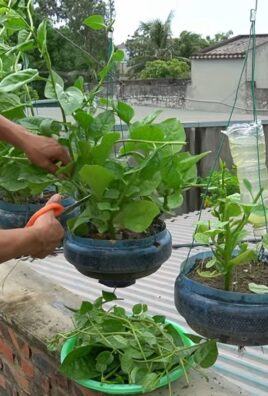
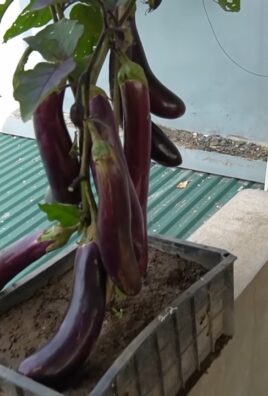
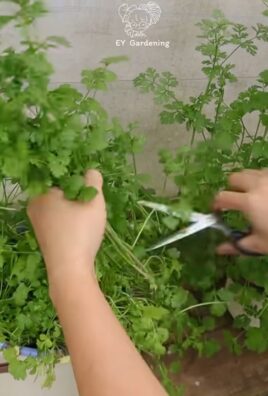
Leave a Comment